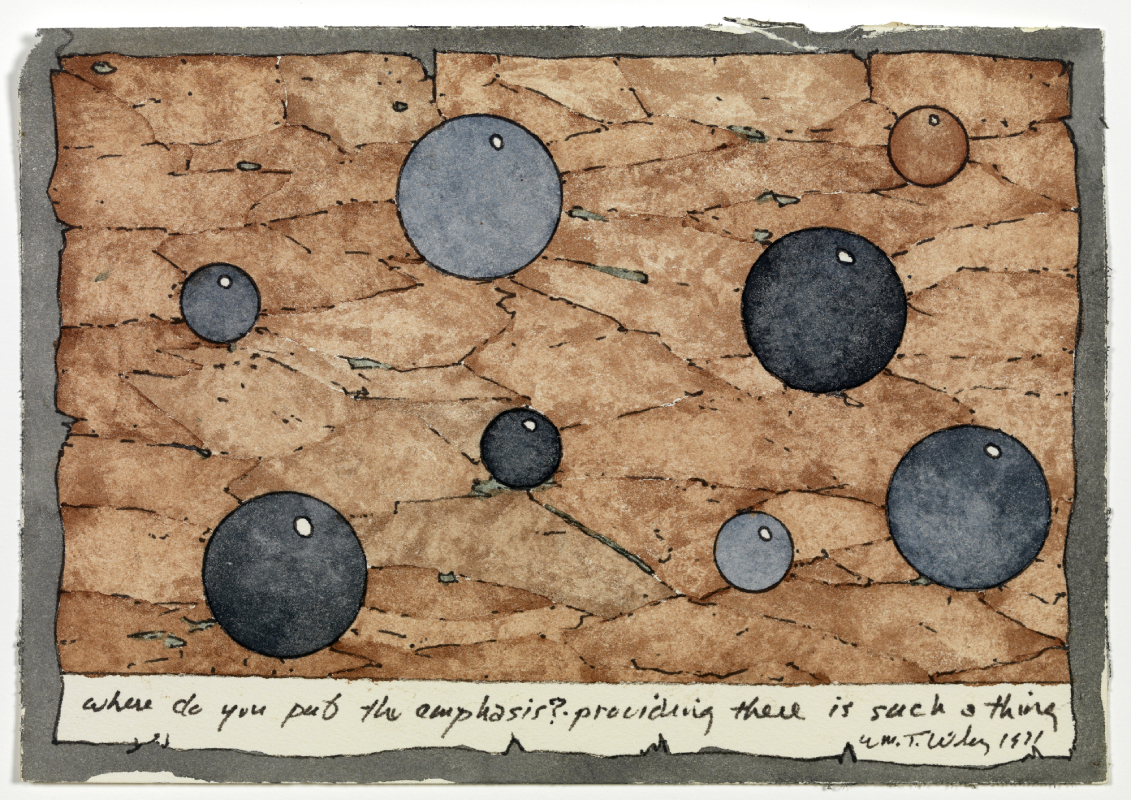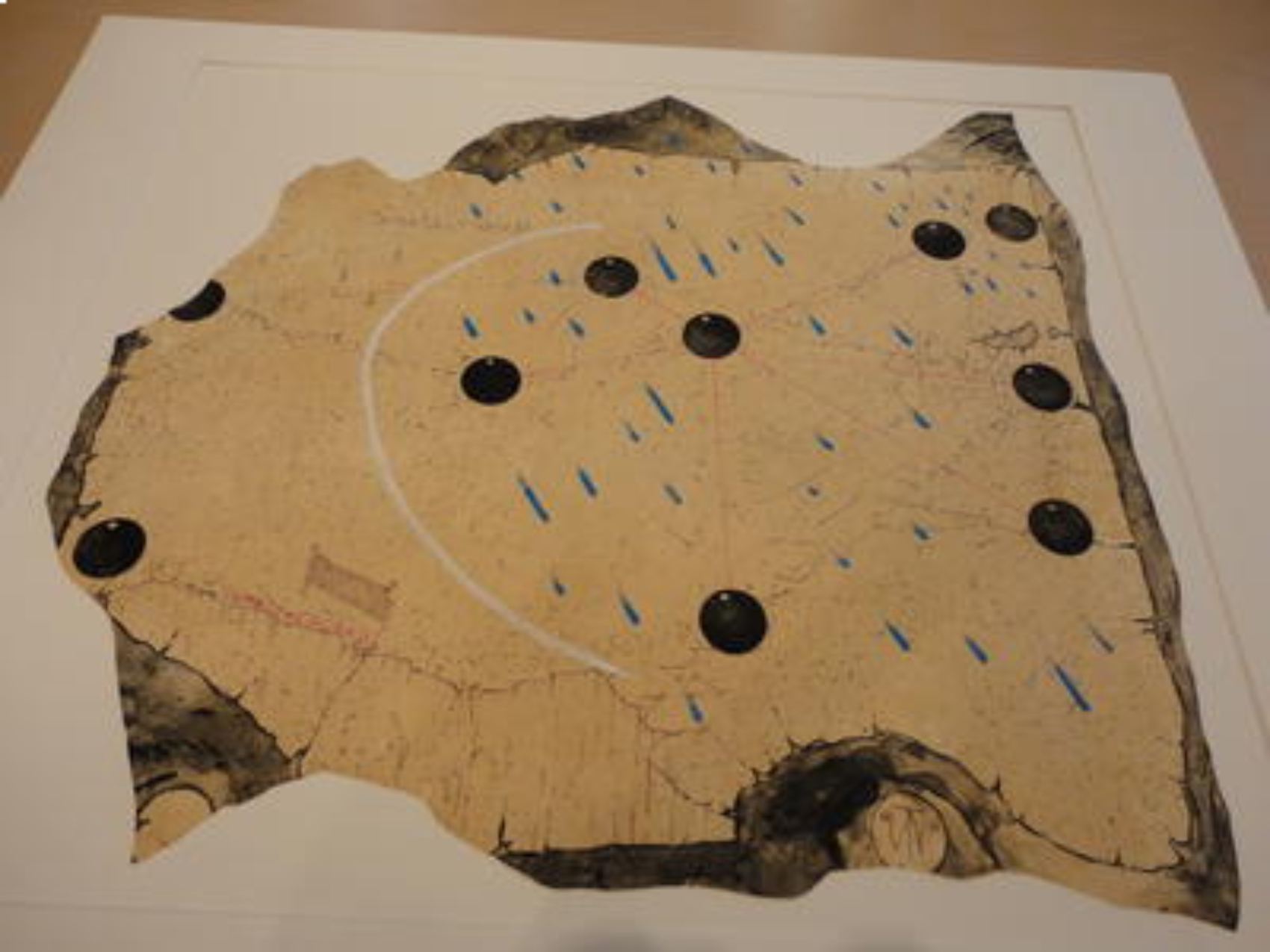
Where Do You Put the Emphasis?
Amanda Shubert is is the Brown Post-Baccalaureate Curatorial Fellow in the Cunningham Center for the Study of Prints, Drawings, and Photographs.
William T. Wiley is something of a cult hero among artists. He is associated with the West Coast Funk Art scene, the irreverent and whimsical anti-establishment art movement that blossomed at the University of California, Davis in the 1960s. His sculptures, paintings, watercolors and performance art works combine Zen philosophy, political commentary, satire, visual and verbal puns and quirky personal symbolism.
Wiley began working in watercolor in 1968, after a six month artist’s block. Small and delicate, and eminently out of fashion in the contemporary art world, watercolor allowed Wiley to work in a personal, searching, off-beat manner. His watercolors, like his sculptures, are assemblages of sorts, contrasting exquisitely rendered drawings, often of an assortment of curiously grouped objects, with hand-written text. Influenced by Zen koans, statements of questions that resist linear thought, Wiley produced images and texts that blur the line between wisdom and whimsy.
Our watercolor and ink drawing Where Do You Put the Emphasis depicts a series of blue circles against a craggy background that resembles desert topography. The text reads: “Where do you put the emphasis? Providing there is such a thing.” The reference to “emphasis” suggests punctuation (especially since there is no final period in the text), but visually the circles evoke marbles or billiard balls more than periods, games of strategy, and chance.
This little drawing is one of my favorite objects from our new Pokross Collection of modern and contemporary art from Shared Inspiration: The Muriel K. and David R. Pokross Collection. As I researched Wiley for the exhibition, trying to learn more about this object, I was pulled into the labyrinth of associations that is Wiley’s personal mythology. For starters, I found that the circle motif kept cropping up elsewhere in Wiley’s work during 1971.
In Random Remarks and Digs, he conceived of the circles as atoms and molecules visible to the naked eye. I even found the motif elsewhere in our collection. Coast Reverse, printed on chamois leather, was made in 1972:

William T. Wiley. American, b. 1937. Coast Revere, 1972. Chamois printed on special Arjomari with hand acrylic painting and drawing. Photography by Amanda Shubert. SC 1972:38-8b.
Read more about Shared Inspiration: The Muriel K. and David R. Pokross Collection here. Then come see Where Do You Put the Emphasis and Coast Revere by making an appointment at the Cunningham Center for the Study of Prints, Drawings, and Photographs.